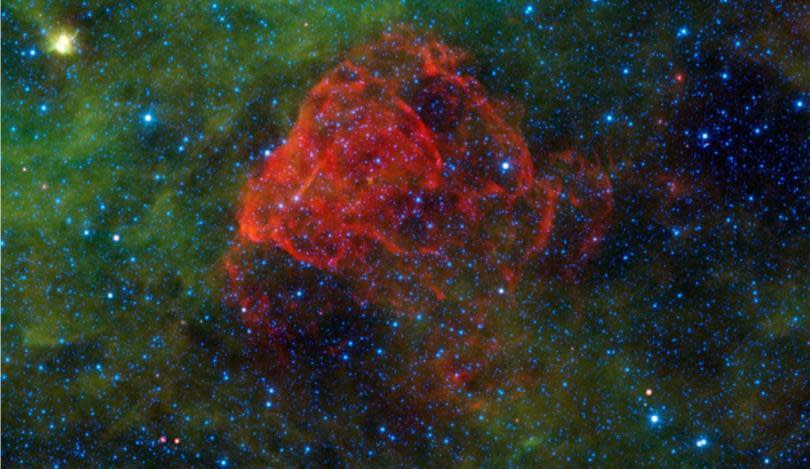Binary Star’s Rare Supernova Explodes In Calcium Shower
Astronomers have discovered a rare star full of calcium that could teach us more about the stellar explosions called supernovas.
It’s a story of love and death, with two stars orbiting the same point — a binary star system — until one day the larger star explodes and floods its mate with material. A study in Nature Astronomy found the scientists detected a star in the remnants of the supernova comparable in size to our sun, but its atmosphere is “strongly polluted with calcium and other elements” to have them in concentrations many times greater than the sun. That could mean the supernova is part of a “class of calcium-rich supernovae … the origin of which is strongly debated.”
Read: This Star Like a Lighthouse Orbits a Black Hole
Those supernovas are rare, so discovering another could help scientists understand how they work.
Lomonosov Moscow State University, which had an astrophysicist leading the research, explained that in the supernova remnant there is a neutron star, which would be what is left of the exploded giant, which can be detected from X-rays. But there is also a sun-like star that can be seen in the optical wavelengths — the ones that include ultraviolet, visible light and infrared.

Astrophysicists have found a binary star system polluted with calcium at the heart of a supernova remnant. Photo: Vasilii Gvaramadze
A supernova is the biggest possible explosion in outer space and occurs when a star takes on too much mass. That can happen because it is an old star or, in the case of some binary stars, because it consumed its companion.
“It would look beautiful up close, right up until the energy intensity vaporized you,” astrophysicist Neil deGrasse Tyson explained. “One of the greatest events in the universe. … happens maybe only once per century per galaxy.”
If you’re looking to get a front row seat to one, you are out of luck — NASA said the sun is just not big enough to cause a supernova once it’s ready to die.

A supernova remnant is what is left after a massive star explodes. Photo: NASA/JPL
Vasilii Gvaramadze, the lead scientist from Lomonosov Moscow State University, said his team will continue studying the new binary system in hope of understanding how the stars orbit, what the neutron star was like before it exploded and the levels of other elements in the sun-like star’s atmosphere.
Previously, scientists generally thought calcium-rich supernovas formed with old stars that have used up all their fuel when there is a “detonation” in a shell of helium around the star, the university said. But the new findings “imply that under certain circumstances a large amount of calcium could also be synthesized by explosion of massive stars in binary systems.”
Learning about these space explosions gives us clues about how our universe works. “One kind of supernova has shown scientists that we live in an expanding universe, one that is growing at an ever increasing rate,” NASA said. “Scientists also have determined that supernovas play a key role in distributing elements throughout the universe. When the star explodes, it shoots elements and debris into space. Many of the elements we find here on Earth are made in the core of stars. These elements travel on to form new stars, planets and everything else in the universe.”
See also:
How are Stars Born? When a Supermassive Black Hole Farts
Astronomers Found an Enormous Star-Planet Hybrid
Related Articles


